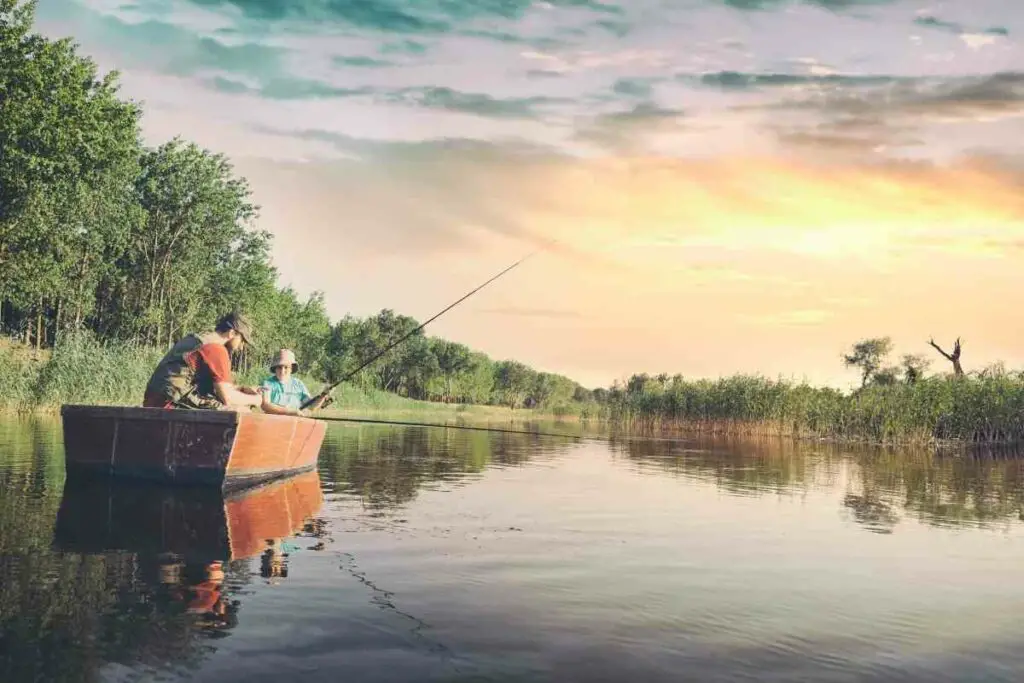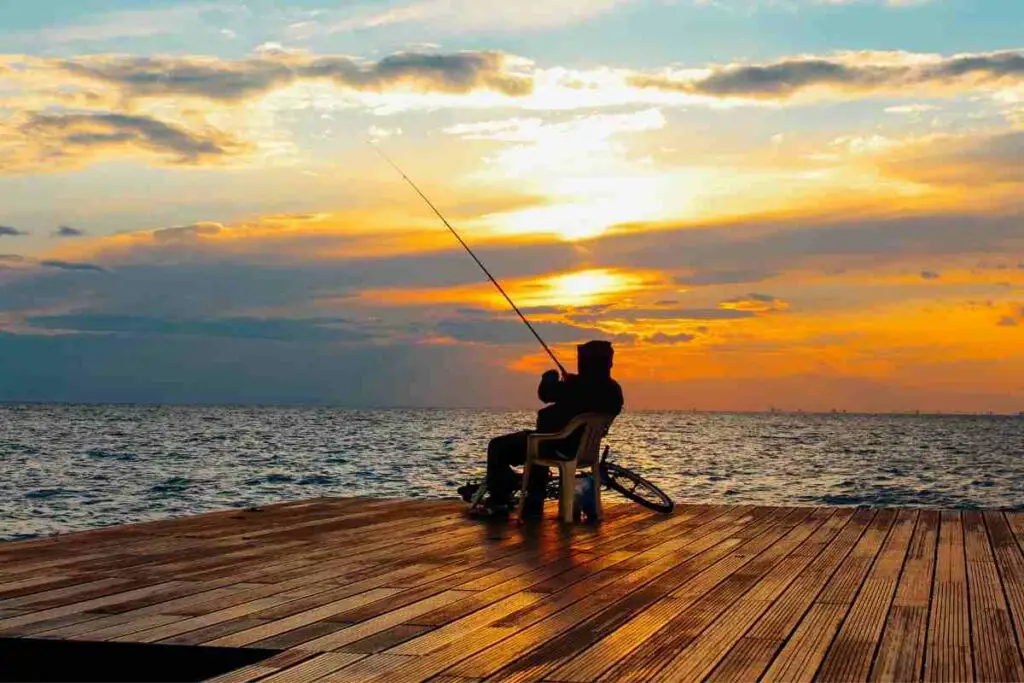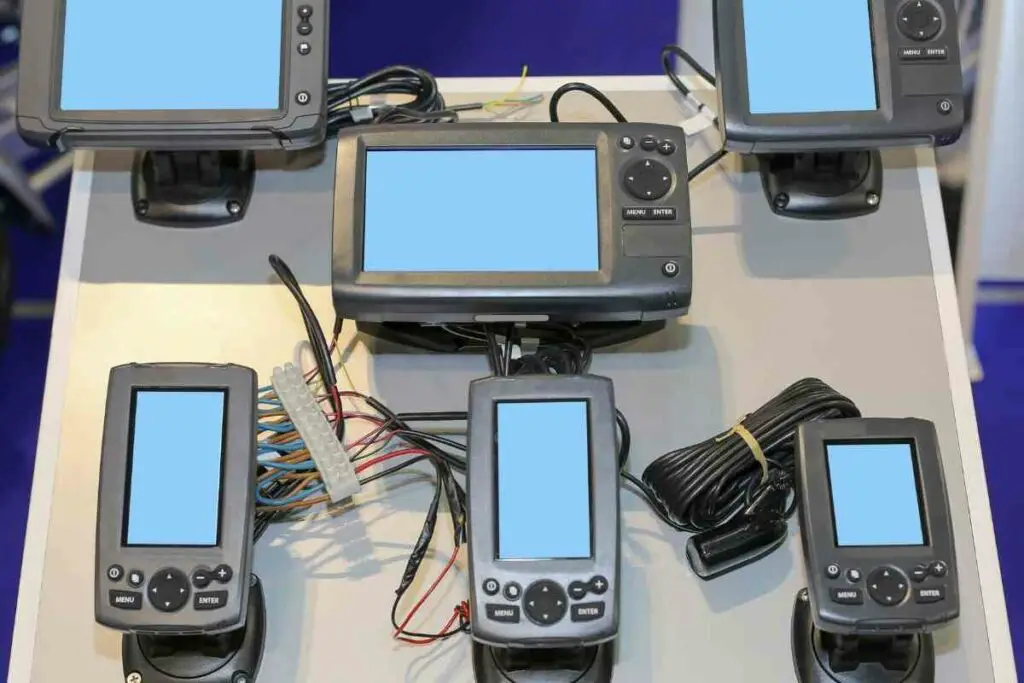
You can’t beat a day relaxing with your fishing rod; the sun, the boat’s gentle bobbing, and a breeze to keep you cool.
A day out on the water can be hard to leave behind – but it’s easier if you’ve got a few tails to tell about the big fish you caught!
And one way to improve your chances of catching big is to use a fish finder.
Table of Contents
What Is a Fish Finder and How Does One Work?
As its name suggests, a fish finder finds fish! It does this by transmitting sound waves by sonar (Sound Navigation and Ranging).
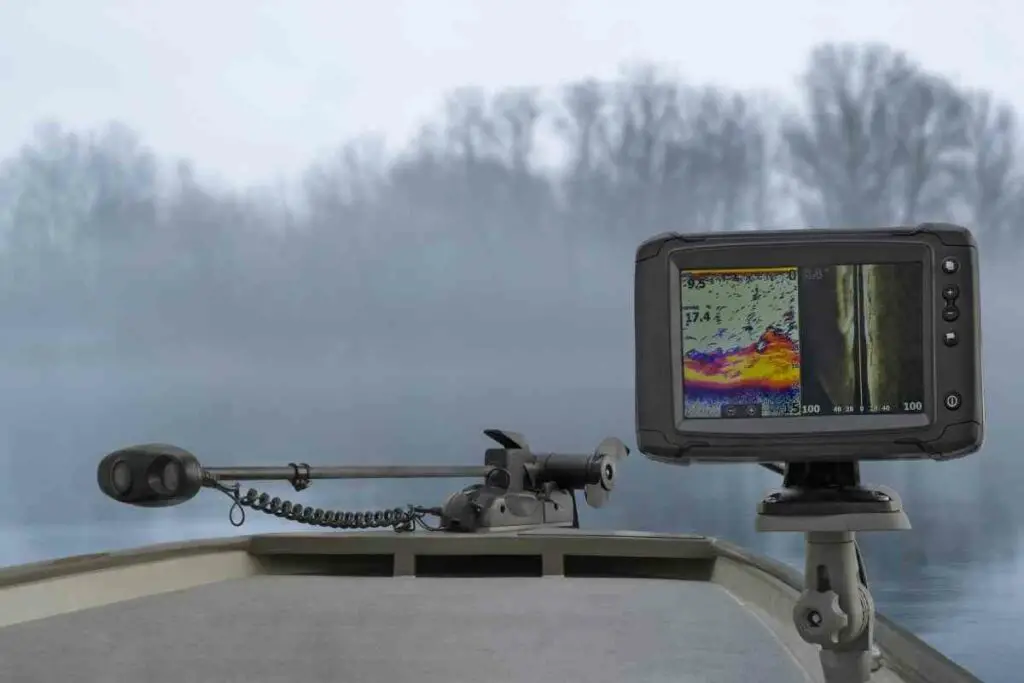
The sound waves reflect back from any object they hit, which means the fish finder can give you an accurate picture of where objects (i.e. fish) are in the water.
This works in the same way as when you play around with echoes in a tunnel, for example.
When you should “echo”, your sound is bounced back off the walls and back into your ear for you to hear again.
Echolocation is quite common in the animal kingdom and is the main way for animals like bats to navigate dense woodland to locate small insects to eat. Dolphins also use echolocation to find shoals of fish.
When anglers use a fish finder, they can’t hear any of the sound waves it sends out because these are not within human hearing range.
History of Sonar and Fish Finders
As we’ve discussed above, nature invented echo-location long before humans did.
- Clear Vu scanning Sonar shows you more of what is in the water around your boat; This high frequency sonar gives near photographic images with detailed representations of objects, structure and fish
The first human to use sonar was the American naval architect, Lewis Nixon.
This sonar, invented in 1906, was created in order to detect icebergs out at sea, and it has been used for a variety of things ever since.
Nowadays: Sonar is used for a range of purposes including underwater missiles, mines, submarines, military applications, ultrasound scans, and much more – including fish finders!
GPS in Fish Finders
All good fish finders incorporate Global Positioning System (GPS) technology.
GPS uses satellites to navigate. For the most part, GPS technology is owned by the USA and its 24 satellites, but more and more similar systems are being created.
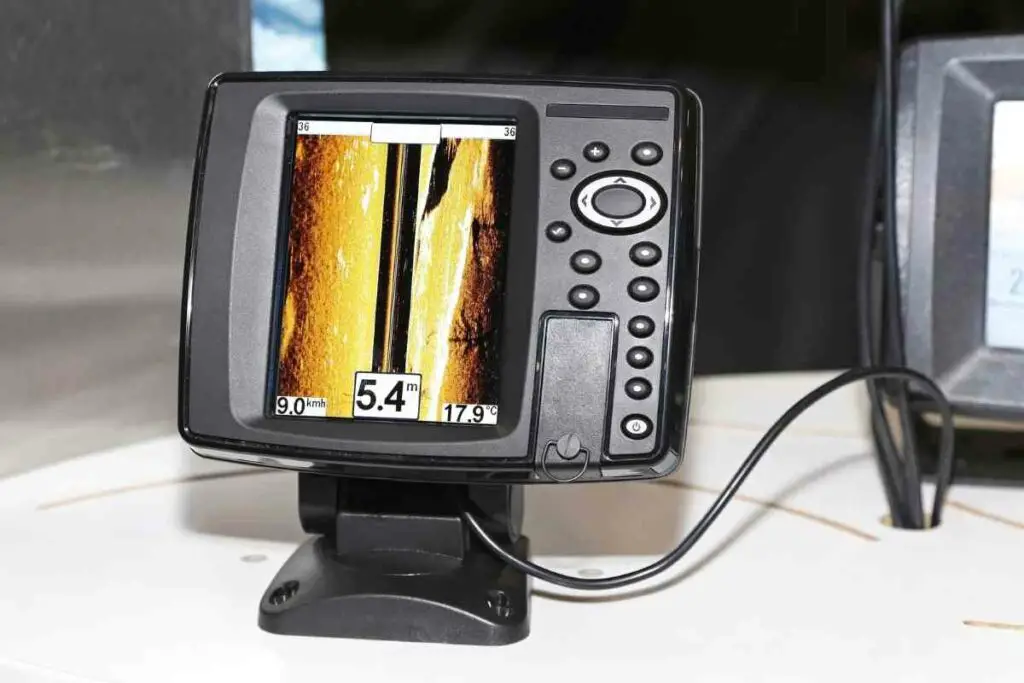
A GPS device works out your location according to the signal your device has received from three or more satellites, using triangulation.
Common Fish Finder Features
If you’re looking for a good fish finder, you should know what features good fish finders have.
Let’s take a look!
1. Backlit Screen
Often anglers don’t work in full sun and lots of people love fishing before dawn or at night.
If your fish finder doesn’t have a backlit screen, you’ll have to use a torch to see it when it’s dark outside.
2. GPS
With GPS, you’ll always know your location.
3. Portability
If you’re putting a fish finder on a boat, its portability doesn’t matter.
But, if you want to use it in a kayak or canoe, you might want it to be more portable.
Portability is also affected by battery life, which we’ll come on to next.
If you want to go fishing for a whole day but your fish finder batteries only last a couple of hours, then it’s not so portable because you’ll have to bring lots more batteries with you.
4. Battery Life
If you choose a fish finder that is independent of the boat i.e. a handheld unit, you’ll want to explore its battery life.
If it’s just a case of switching out the batteries when you need new ones, that’s not so bad.
But if you need to charge it up by plugging it into a power supply, that could be a problem.
5. WiFi and Bluetooth
If your fish finder has an app where you can download updates and maps using a smartphone, you’ll find updating the software much easier.
Provided you have a phone signal, you will be able to download new maps.
6. Depth and Distance
These two things are two of the most important things about choosing a fish finder.
Depth and distance matter when it comes to finding fish.
The further you can find fish, the further away you can go to find them!
7. Precision and Accuracy
When it comes to finding fish, you might want your fish finder to be able to distinguish between one large fish and a few small fish in a group.
You want to know that you’re using your big lure in the right place so it’s not wasted.
Types of Fish Finders
There are lots of different types of fish finders on the market and each has distinct purposes.
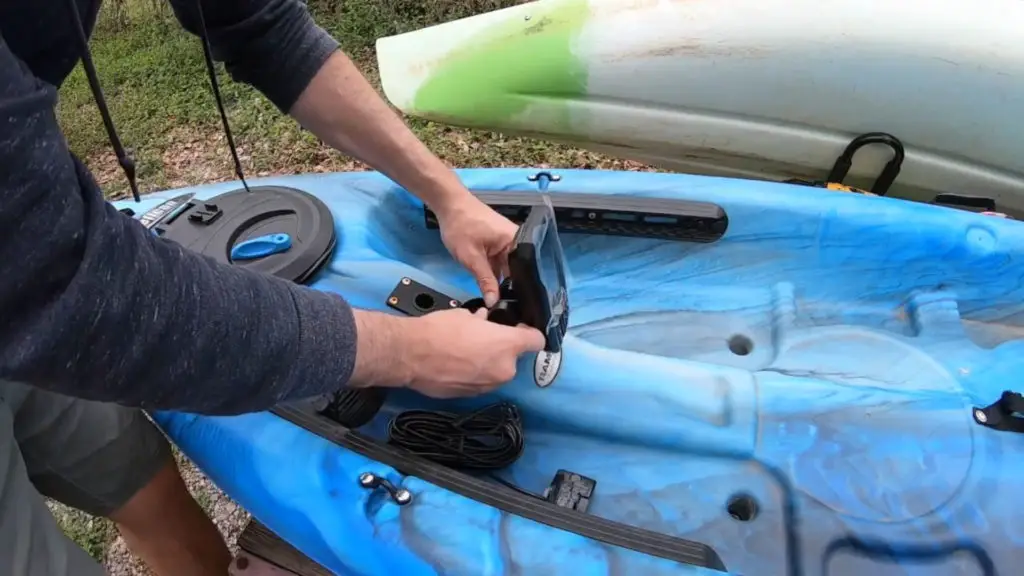
Mountable Fish Finders
These are a great option for attaching to a small boat.
Mountable fish finders come in a range of structures and sizes. You’ll have a display unit providing information such as details about the conditions under the water.
Mountable fish finders and be attached to a boat either temporarily or permanently.
Portable Fish Finders
As its name suggests, these fish finders are easily moved around.
They are lightweight and can be fixed or removed whenever you wish.
These will come with separate batteries and are ideal for fishing from a small boat.
Chirp Fish Finders
This type of fish finder will typically transmit frequencies between 70 and 110 kHz.

These will send back more details and a clearer picture.
Down Imaging Fish Finders
These are among the newest fish finding technology and compete directly with 2D sonar fish finders.
Down imaging beats traditional fish finders hands down as it combines down sonar and side sonar imaging to produce a picture that’s very accurate.
So, you’ll be able to see fish targets and any other structures under the water that might get in your way.
Side Imaging Fish Finders
This is an important fish finder type. It uses two sonar beams that curve upwards narrowly.
This is an efficient fish finder device that creates a colorful image. These make it quicker to find fish.
What to Look for In a Fish Finder

- Device size – larger fish finders are harder to mount onto boats. Choose depending on what type of boat you are going to use to go fishing.
- Transducer – this is the part that sends and receives sound ways, choose the highest performing transducer you can afford
- Display – this depends on your preferences, most displays are colored
- Frequencies – a high-frequency range means a better image
- GPS – with GPS, you’ll know where you are and whether you’re in the best fishing location
- Cone Angle – a smaller cone angle provides a clearer picture
- Fixed Vs Portable – if you’re wanting a fish finder for a kayak, go for a portable.
- Scanning – an essential for fish finding. This can be down scanning or side scanning.
Final Thoughts
So, if you’ve been wondering what to look for in a fish finder, we hope you’ve now got a better idea of what features these devices have.
Whichever fish finder you choose, you need to make sure it’s suitable to your needs in terms of size, portability, durability, image quality, and whether or not it has wireless capabilities.
Always choose the best you can afford but don’t go above budget if you’re not going to use all of the features. If you don’t need GPS, for example, don’t choose a model with this feature (unless the model has other features that you’d like to have).





